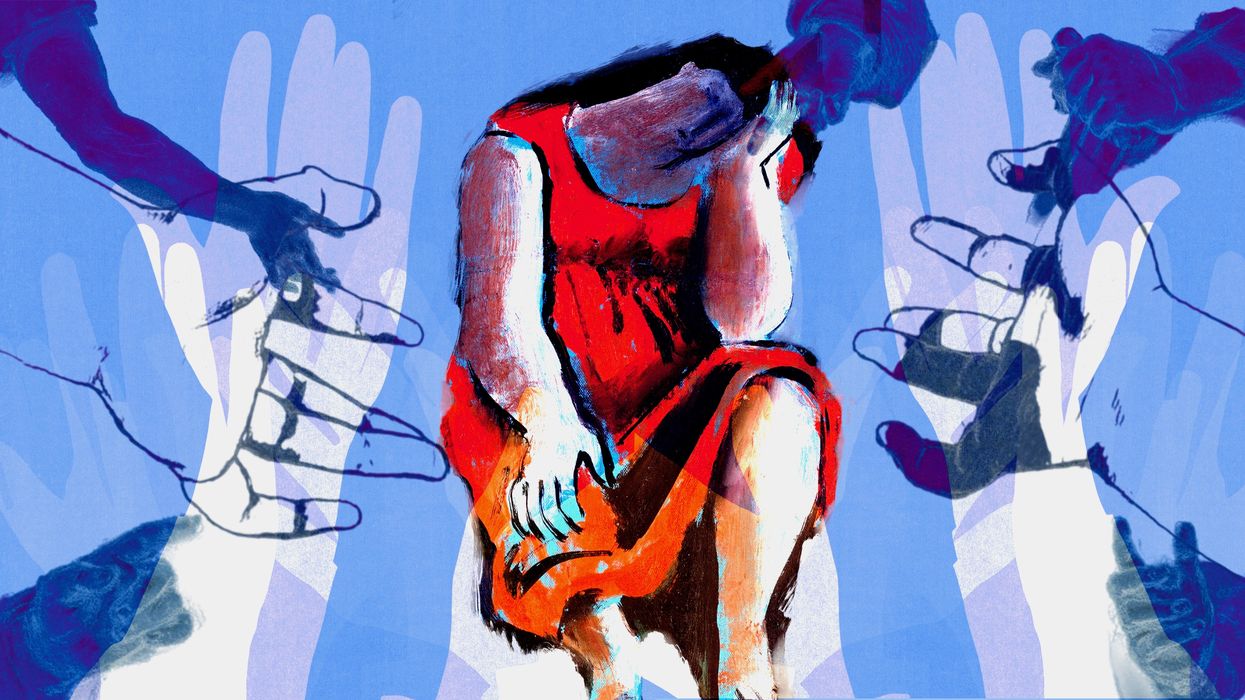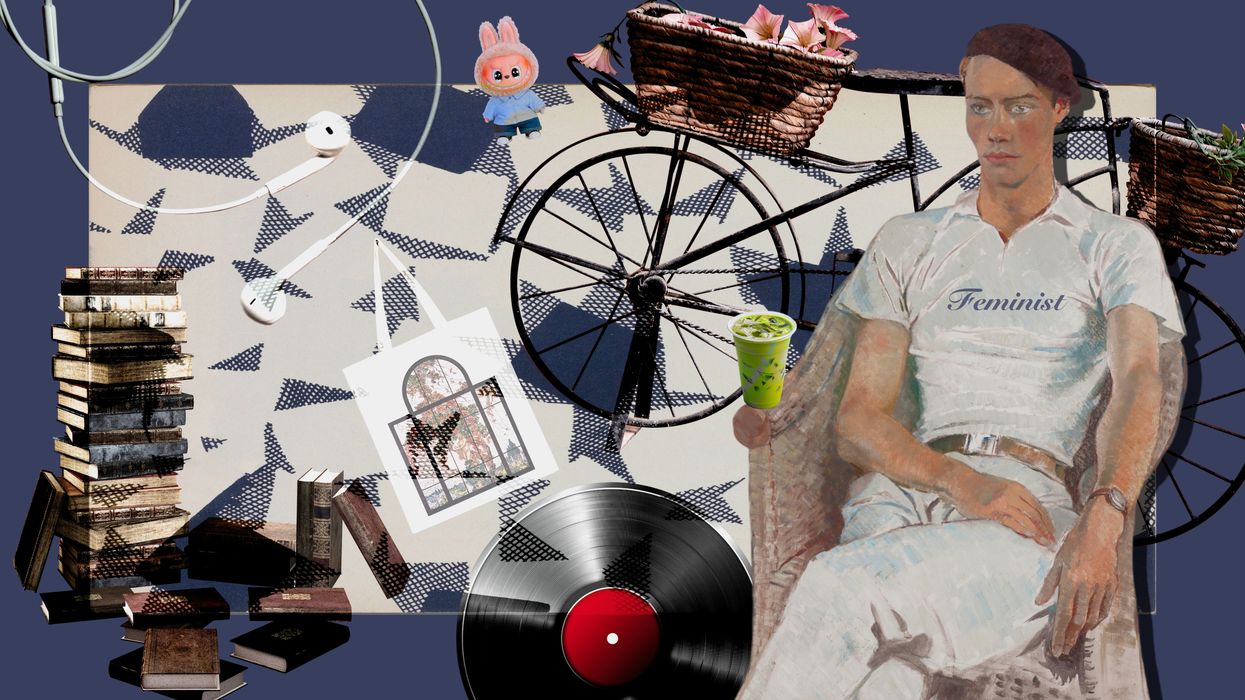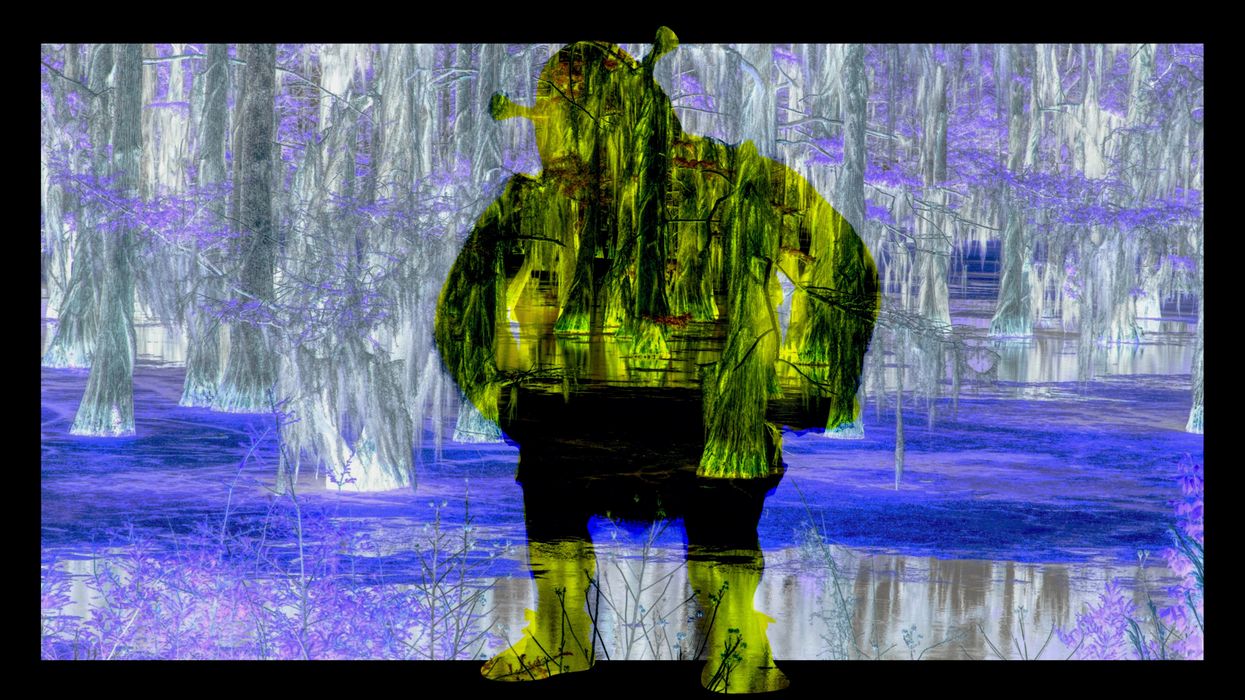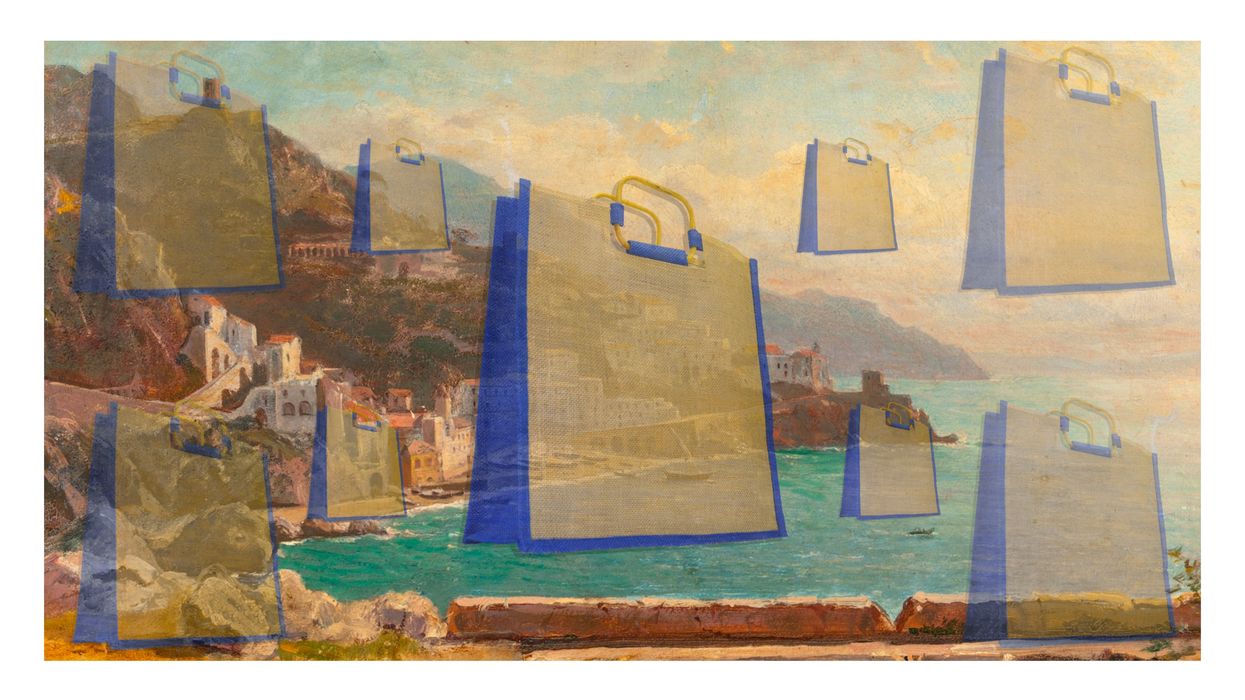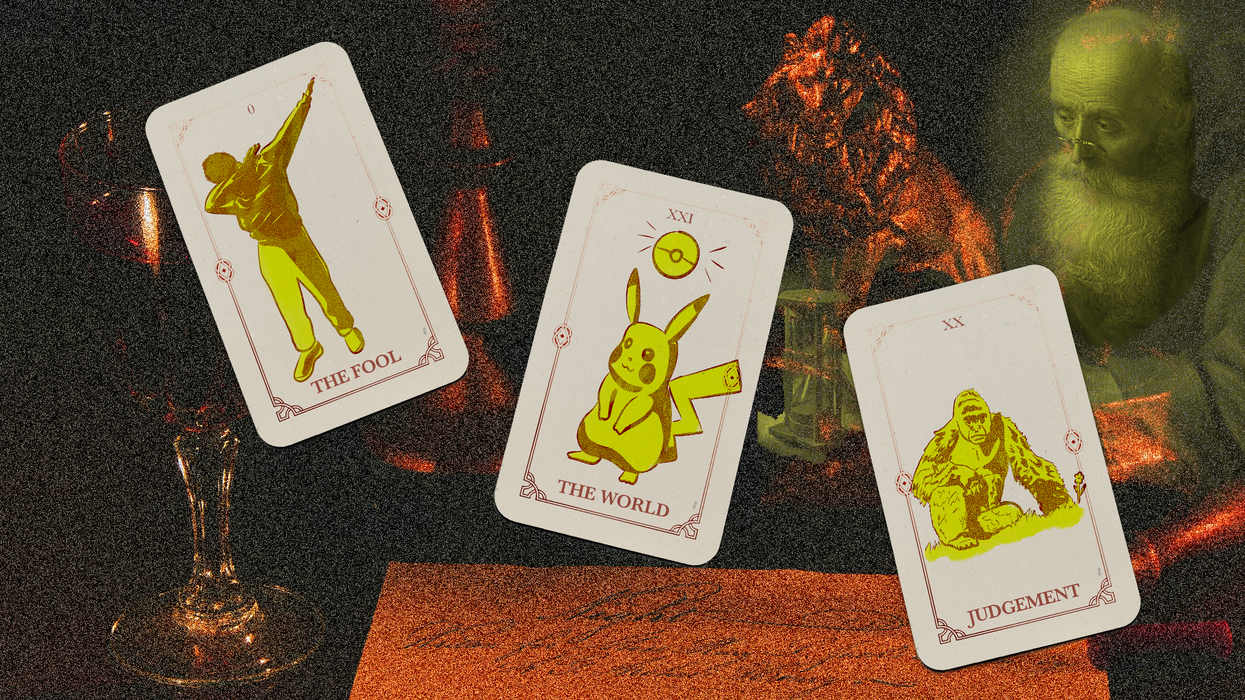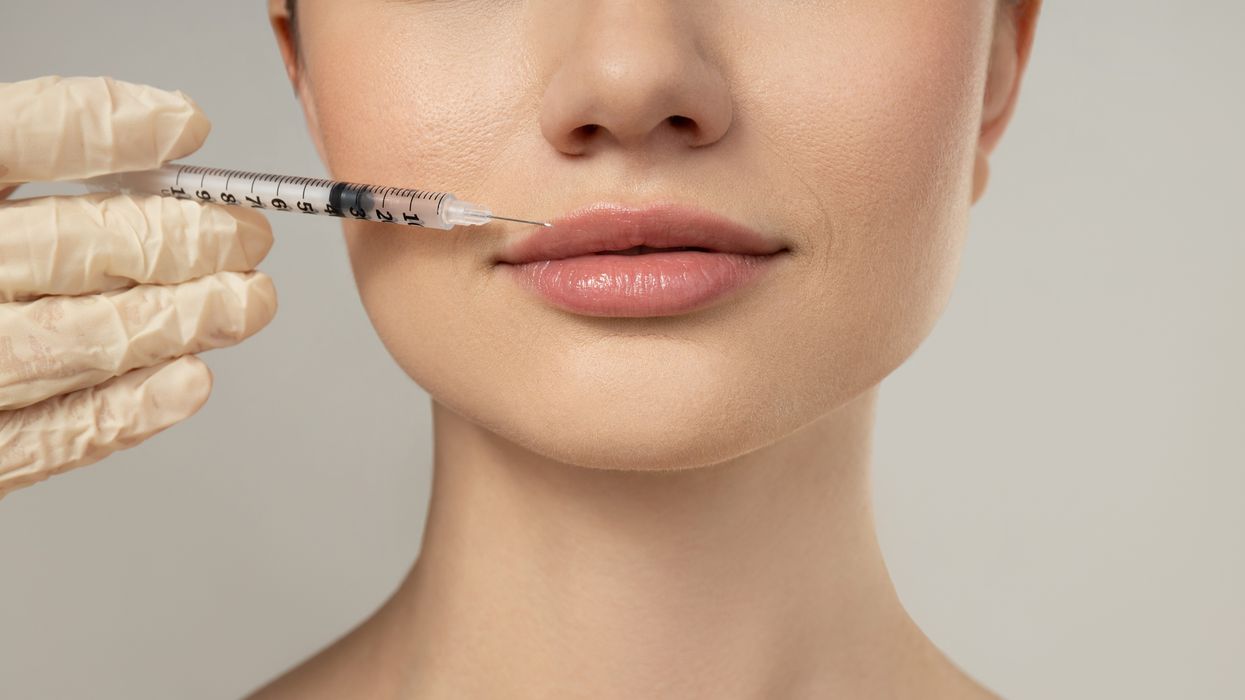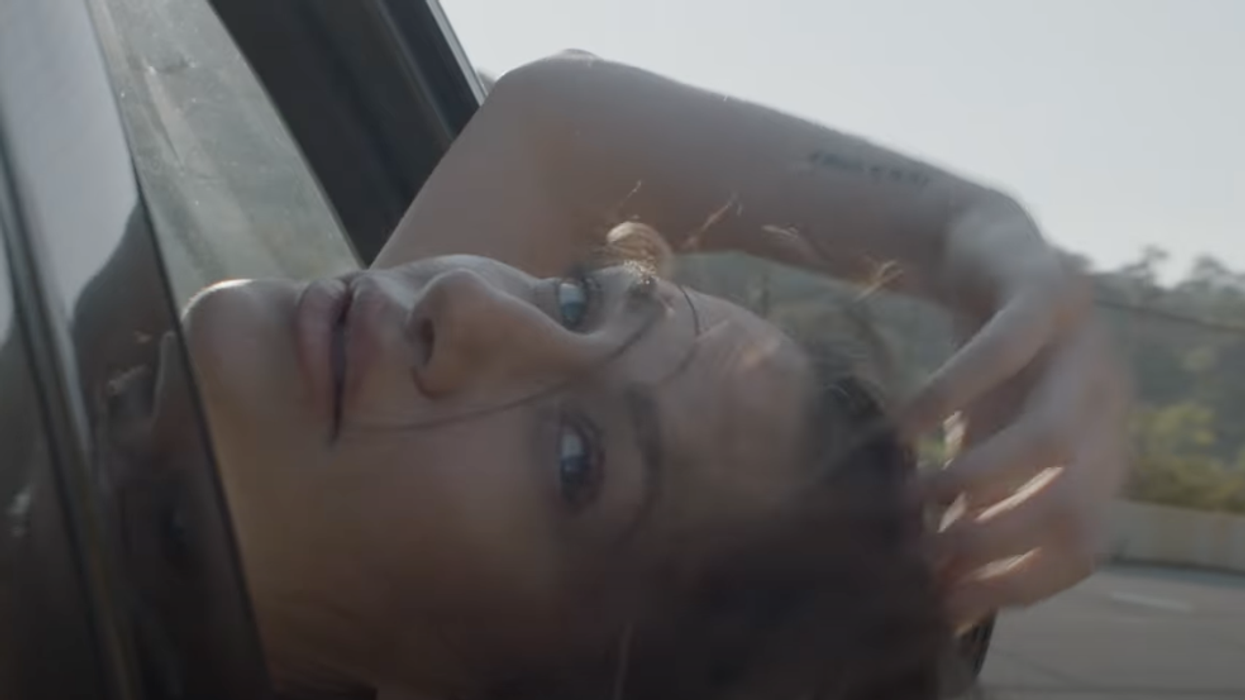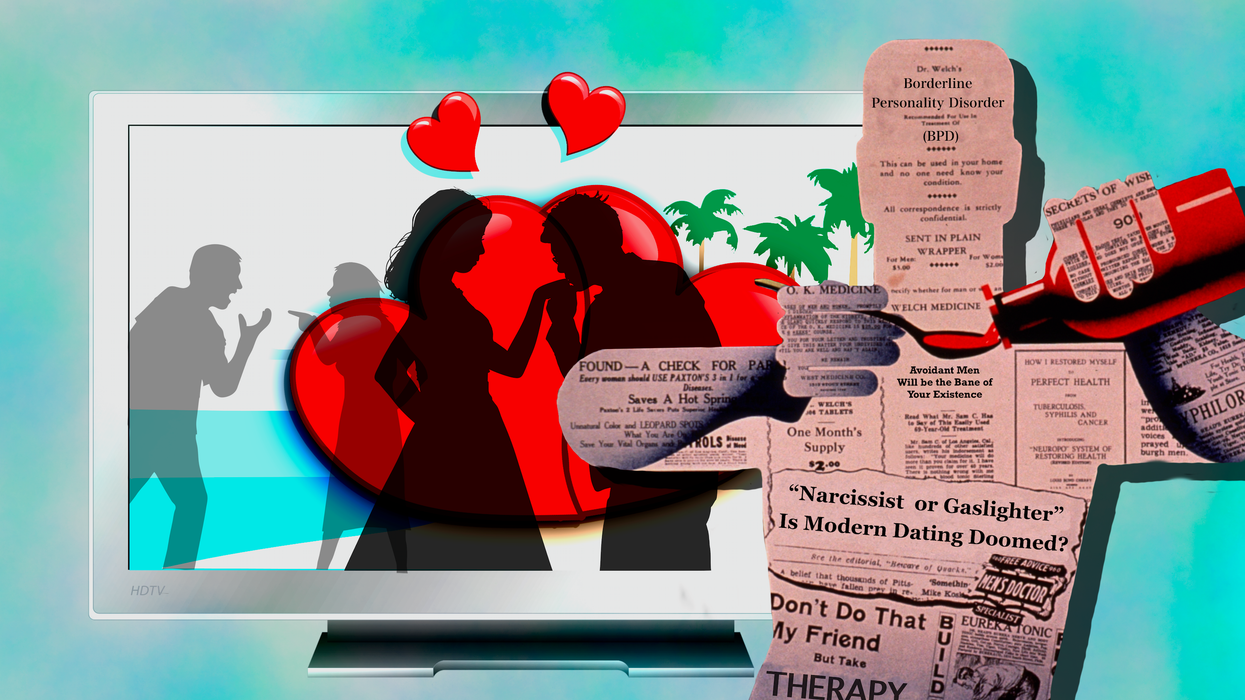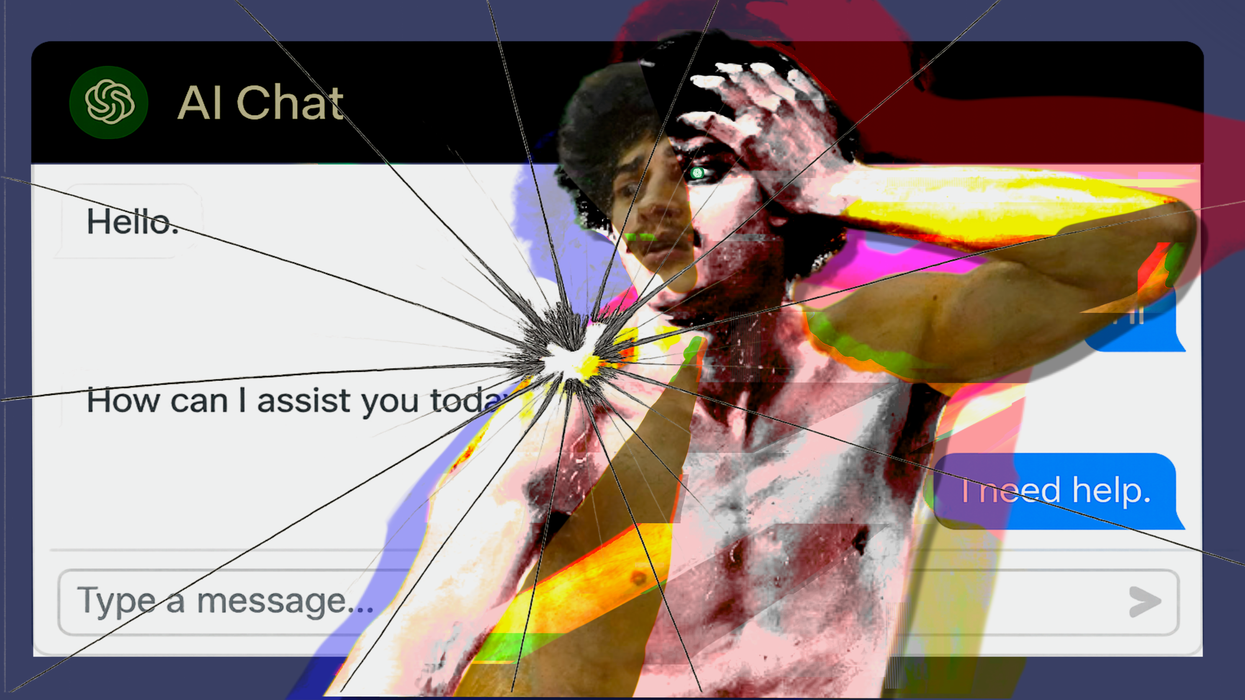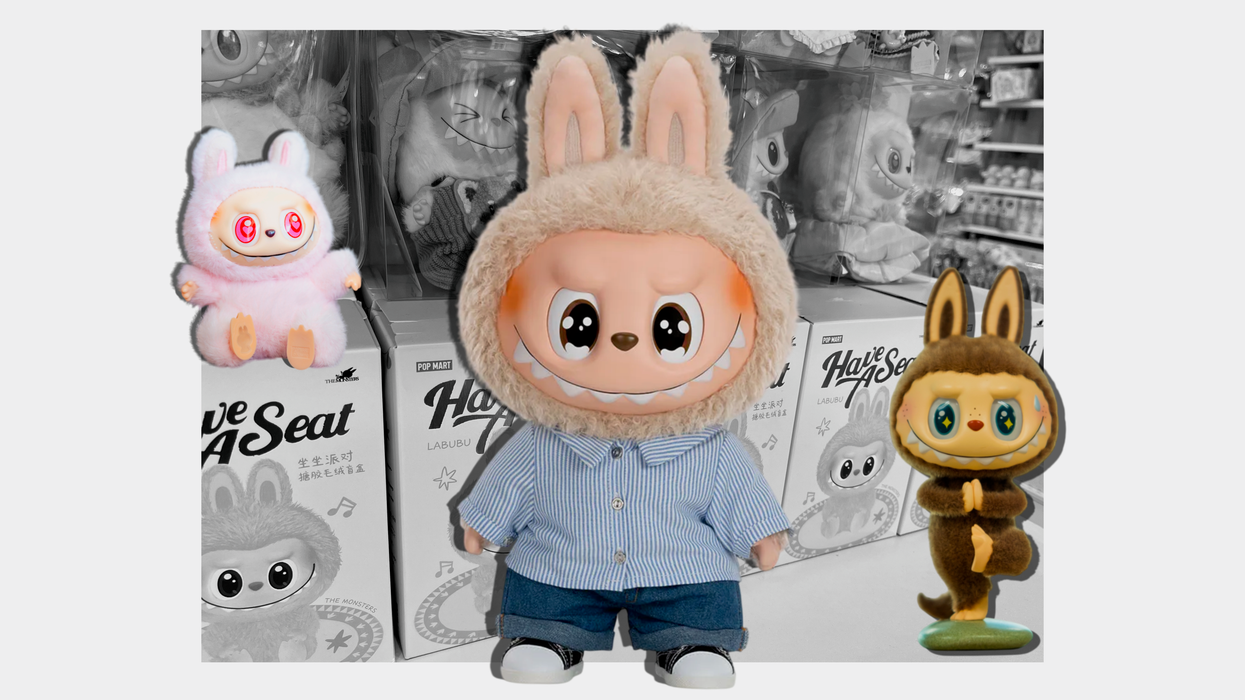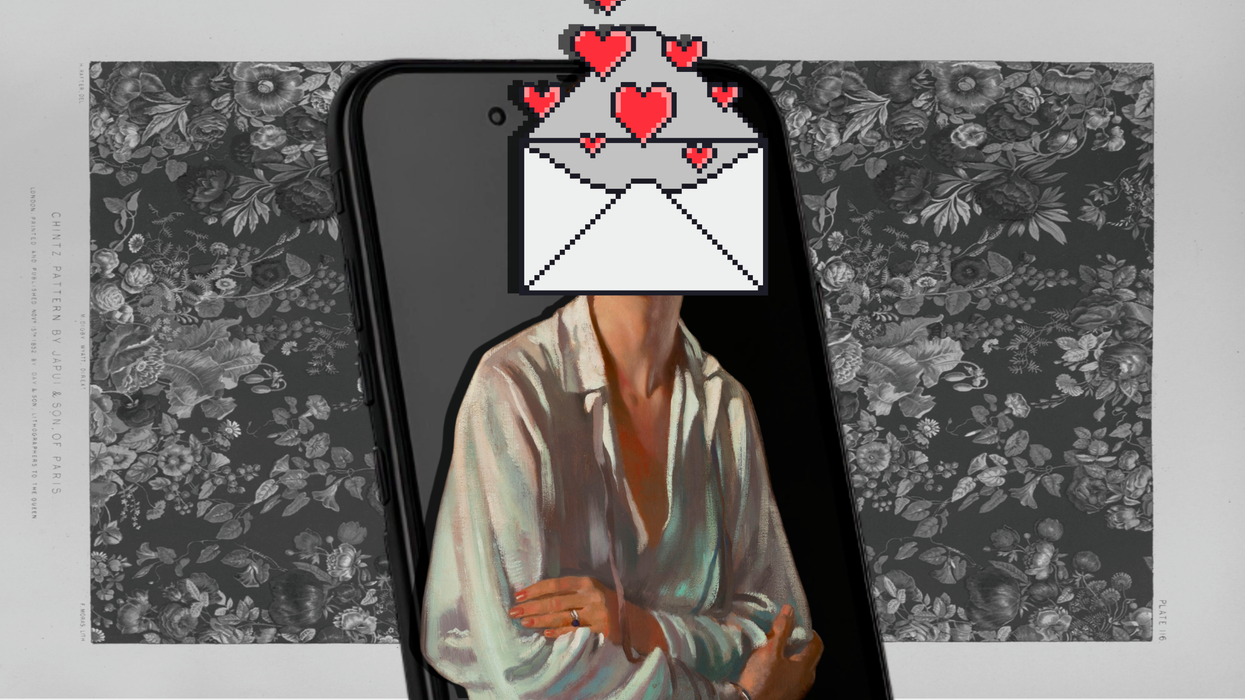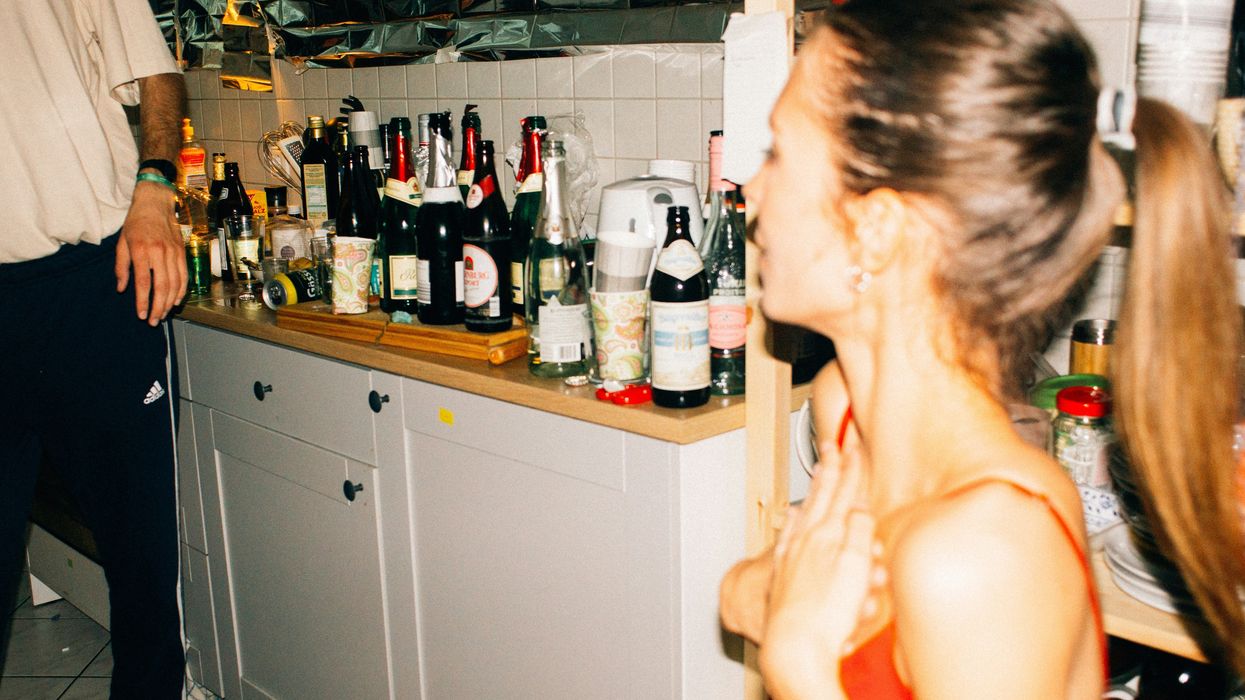When Deidre Corcoran began to paint a year-and-a-half ago, she’d never picked up a brush and couldn’t tell you what acrylic paint was. It had taken her twenty-some years to enter her friend’s studio and start working on a canvas, but as soon as she did, something inside her changed. All of a sudden, the 58-year-old self-taught painter says that “the noise in my head went away, and I couldn’t focus on anything other than the art,” which began to occupy both her dreams and waking thoughts.
Except, it wasn’t idyllic images of roses and daisies, but flowers that come “with a little bit of blood on them.” It was dark color palettes, hard surfaces and ominous text. A passing cloud containing “a cow that became a pair of underwear, became fried eggs, became two forks.” It was existentialist pigs next to faceless nudes with “Not a Thing to Hide.” A sense of looming dread offset by her dry sense of humor. And all of these images are manifestations of “the weirdness, the quirkiness and the shit you’re never really accepted for,” as Corcoran explains, adding that she sees “a lot of myself in the things that I paint.”
“So it’s me saying, ‘This is my thing, I'm proud of it, and it's weird,’” the former photographer and interior designer says.
“And I have a lot more inside of me,” she continues. “There are things that I haven't told yet. Things that I haven't exposed yet. And I know that it will come out in my art.”
As Corcoran explains, she can be an open person, but there’s a part of her that still doesn’t want you to get too close. That said, painting has helped her slowly gain confidence in being vulnerable and “peel back those layers,” pushing her to continue “uncovering and discovering,” even if she thinks something is finished. It’s a statement that applies to both her paintings and, in a metaphorical sense, her life, which has helped her reconcile with “the doors that have closed, [and] the struggles and pain that I have experienced.”
Some of these struggles include topics like her childhood and aging as a former model. Using the latter as an example, she explains that art has helped her “fully embrace herself,” to the point where she’s been able to say, “it’s okay to have gray hair, it's okay to have wrinkles, it's okay to get old, and I don't have to fight that anymore.”
“And that was a really big deal for me. So when I changed my photo on my Instagram from a photo of me to a photo of my art, I felt really good,” Corcoran says. “I was like, ‘That's my soul [and] my interior.’ And I've been fighting my whole life to not be the makings that you walk around in. It’s what you've got inside.”
She continues, “I just have to keep pushing, keep digging, keep uncovering. Nothing is easy, but I want to keep uncovering my art. I want to keep uncovering myself.”
Another aspect is embracing the darkness within her, as someone who has struggled with depression throughout her life. According to Corcoran, so much art feels like bouquets of easy-to-digest flowers, but darker works, pieces that prompt viewers to ask, "Are you okay?" is what she has always been drawn to.
“But I just want to be where I am, and I love the dark,” Corcoran says. “I love the undercurrent. I love people's gritty, horrible stories as much as I wish it on nobody. I just know that the dark has made me a richer, more interesting person.”
It's obvious talking to Corcoran that she's drawn to those who openly carry their struggles rather than those who pretend everything is fine. Yet alongside that darkness, her work also highlights her wry humor, something she credits to the resilience and laughter of her large Irish family. She prefers weeds to perfectly arranged bouquets, favoring messiness and authenticity over illusion.
In her art, she strives to create spaces where viewers feel safe confronting uncomfortable truths and discovering deeper meaning in life's imperfections. Her personal struggles and artistic expression meld into a celebration of the beauty in ugliness, the humor in struggle and a communal exploration of discomfort.
"If I were a flower," she says, "I'd be a dandelion or an onion flower. I'd be a flower who managed in the shade even if I was supposed to have full sun."
This profile is part of VEXT's series with Cohart, a social art marketplace for artists and art buyers.

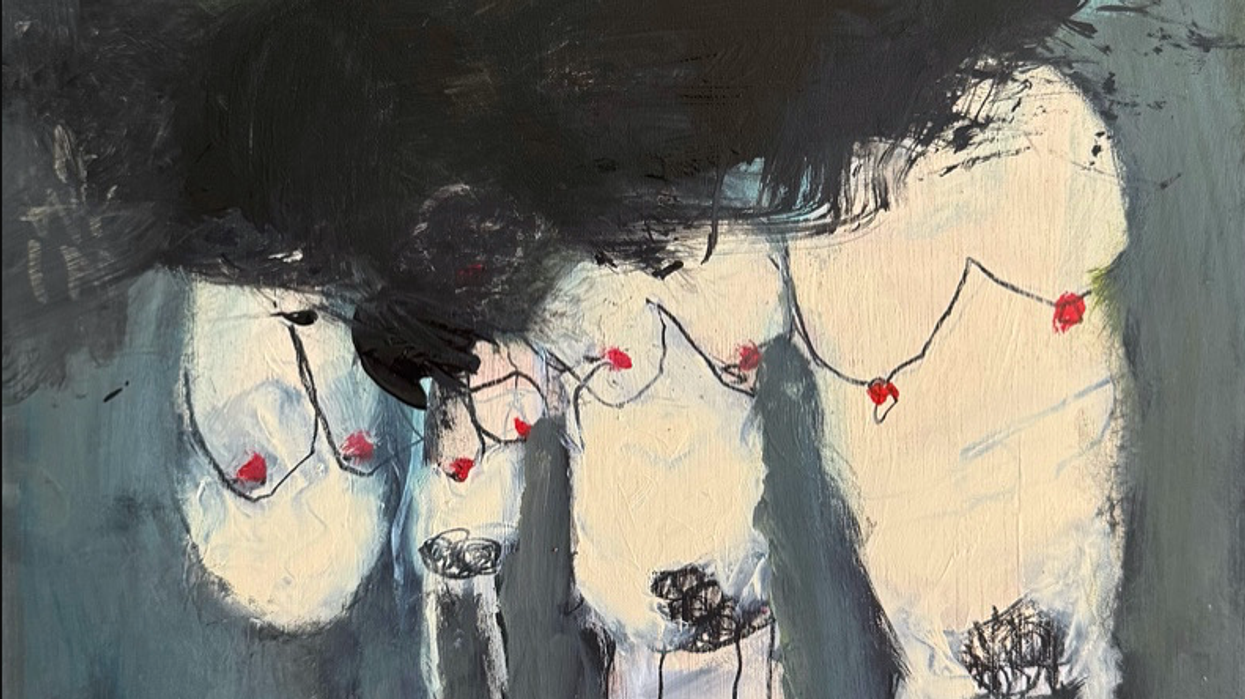
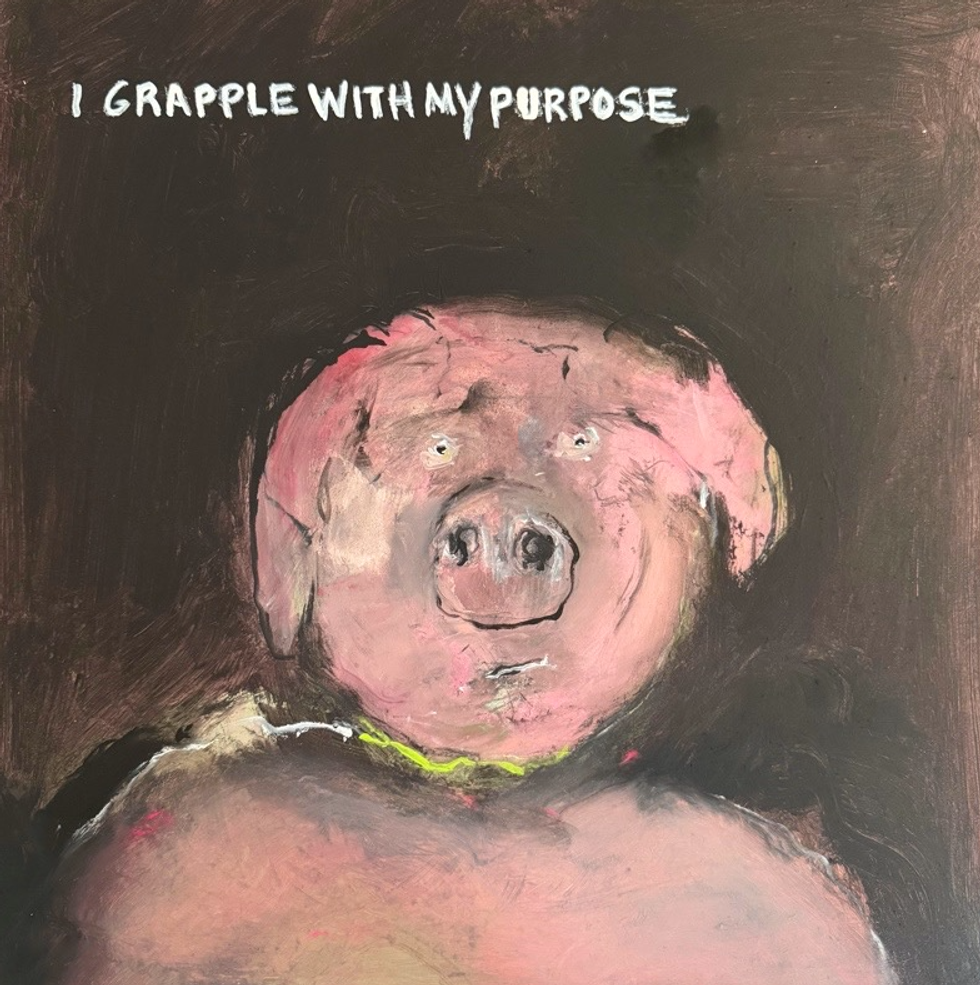
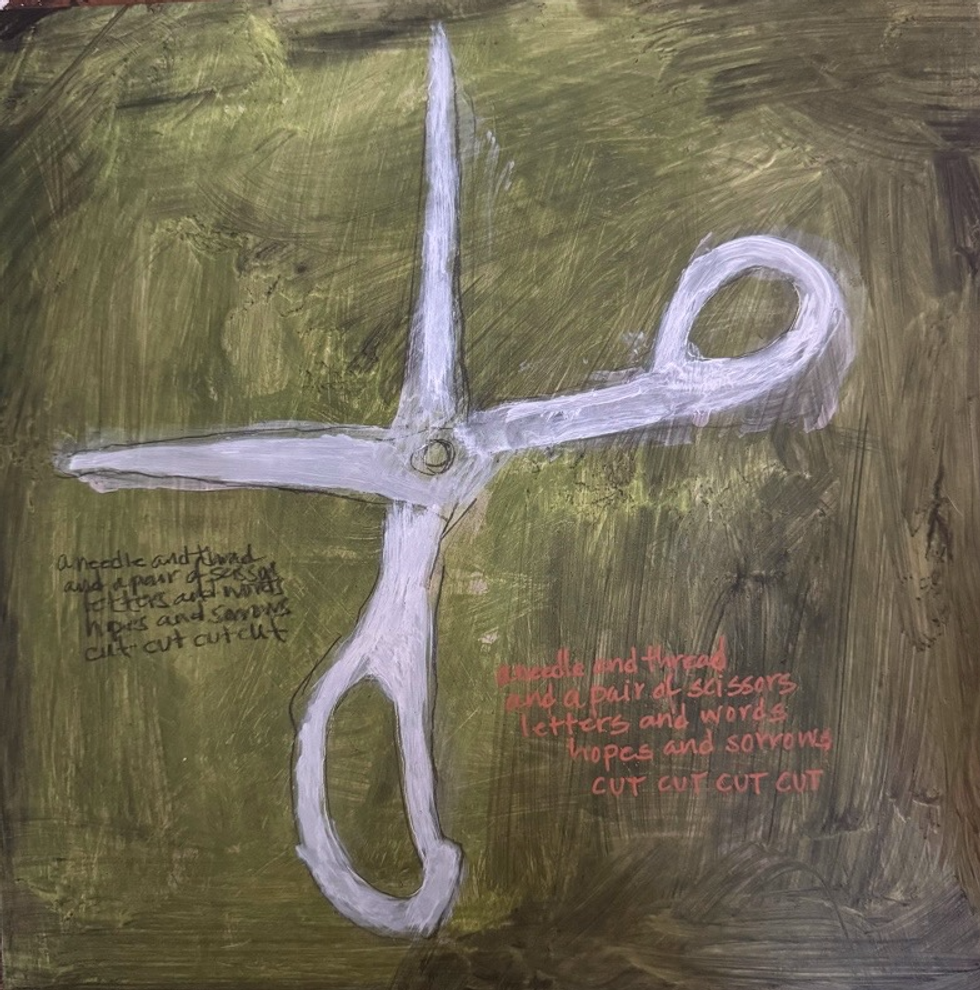
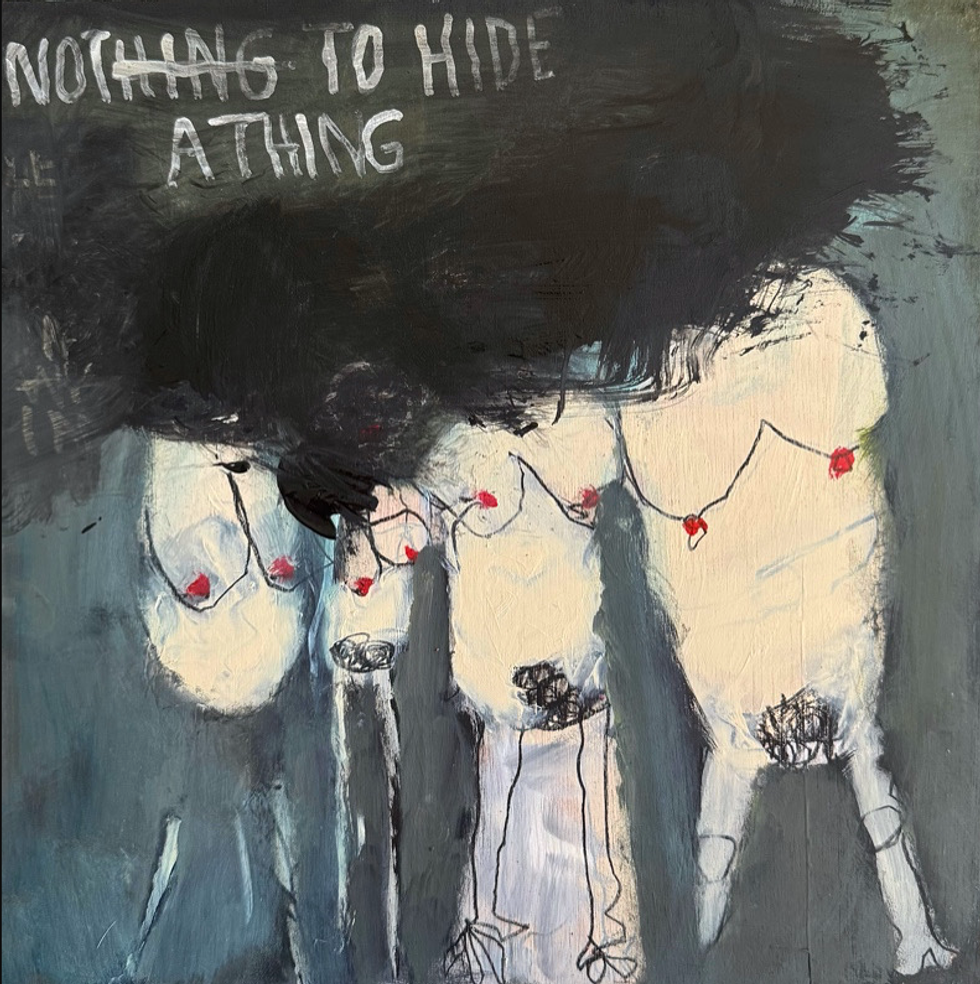
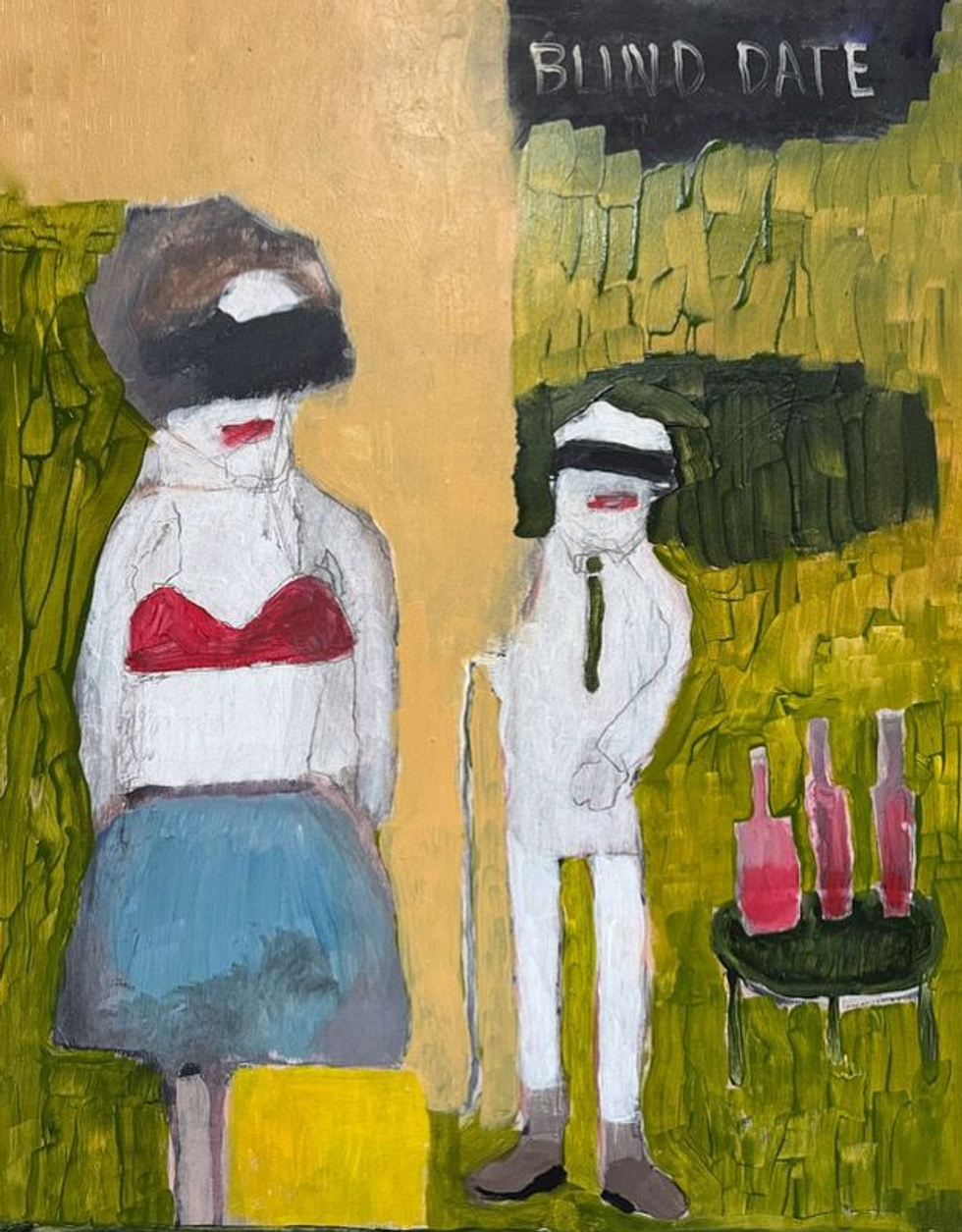
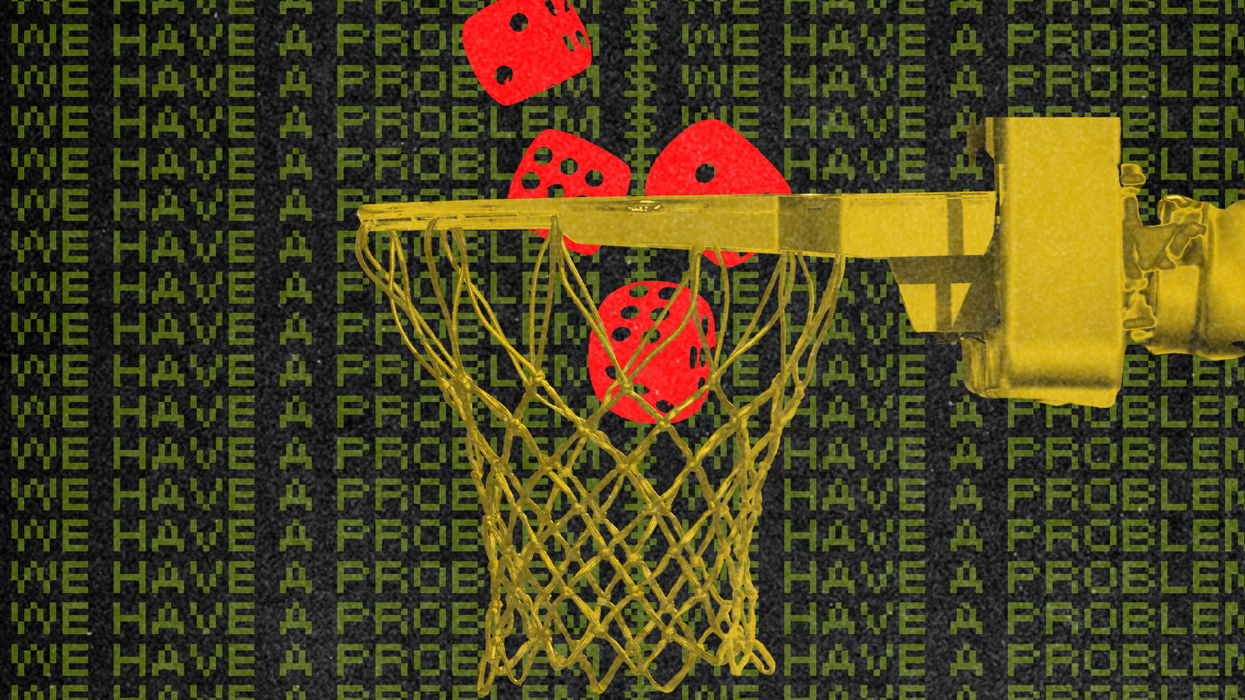
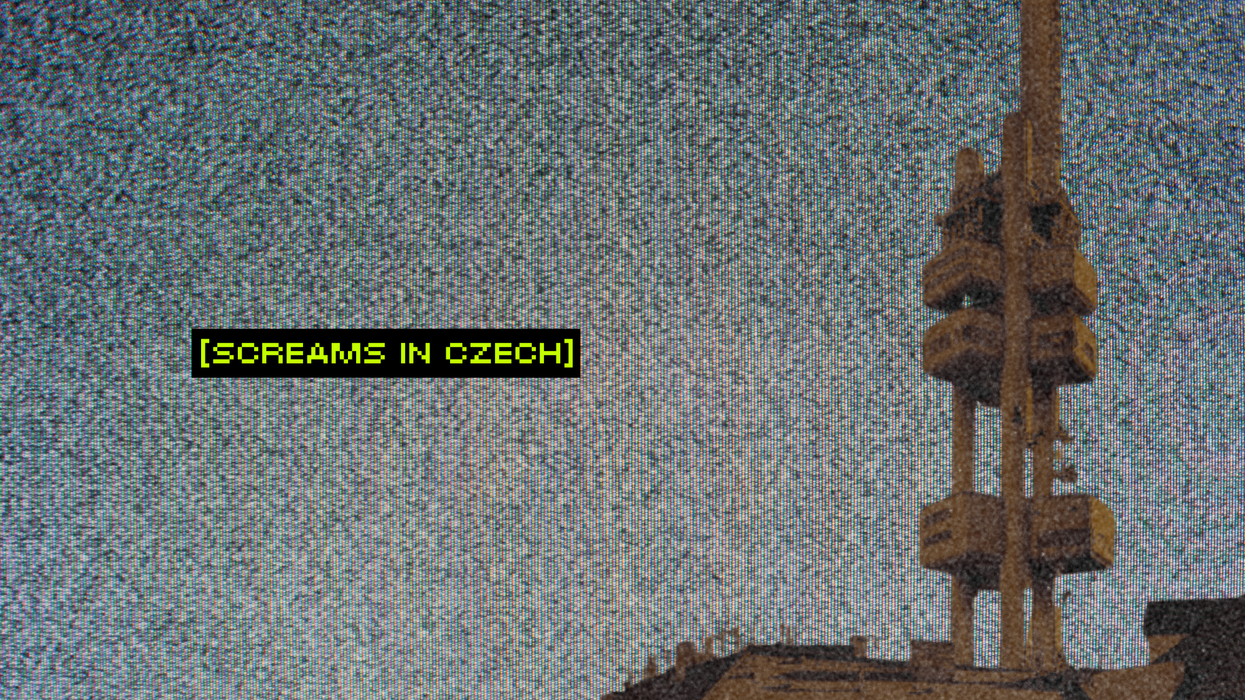
![[10/10] La Chimera: A Dreamlike Descent Into Grief, Memory and Myth](https://vextmagazine.com/media-library/image.png?id=61454821&width=1245&height=700&quality=90&coordinates=0%2C0%2C1%2C0)
